Kopų žuvėdra SPA & hotel
Kopų žuvėdra SPA & hotel
The coast of Lithuania is attractive with its long sandy beaches and dense pine forests. The mild climate attracts walkers and visitors who appreciate fresh air. However, the intense seasonality of weather does not allow tourists to discover all the advantages of coastal nature. The location of the complex is unique due to its unique set of values: an adjacent sandy beach, a natural pine forest, exceptional historical objects, well-developed infrastructure, proximity to the city, and a growing residential area.
When forming the concept of the complex, the most important aspect was the principle of dissolving the volume in nature, while maintaining exceptional comfort inside. Based on this principle, the structure of the ensemble was created.
An urban structure of free planning was chosen, which fills the spaces between the fabric of trees. The buildings are arranged so that only the rear facades and fragments of volumes are visible from the main points of view or access to the complex. Natural axes are interpreted, creating a mathematical network of axes, which becomes the basis of the urban composition.
- Location
- Klaipėda
- Purpose
- Recreational
- Client
- UAB „Kopų žuvėdra“
- Authors
- Edgaras Neniškis
- Arūnas Liola
- Rolandas Liola
- Žilvinas Urbas
- Eglė Daunoraitė
- Visual
- noisyowls
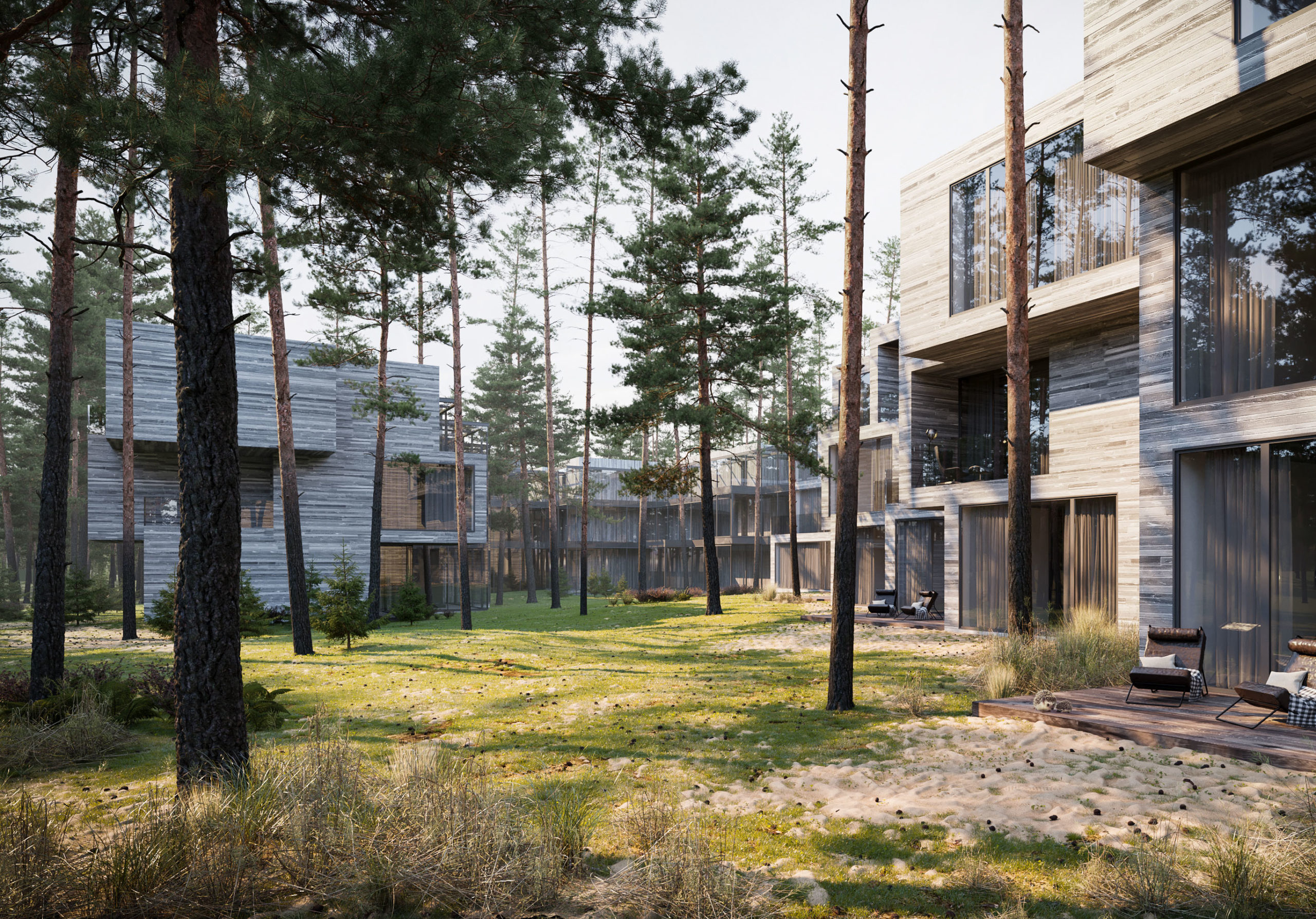
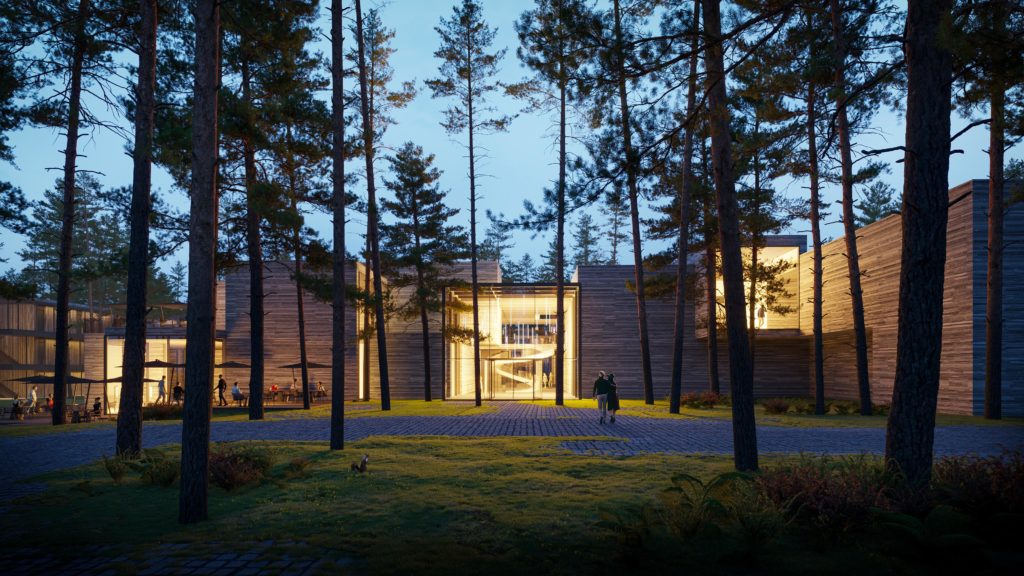
Since the unique element of the territory is a pedestrian alley connecting the protected defense facilities and the beach, which conditions the visibility of the complex from all sides, it is therefore proposed to create a network of local, semi-closed, dedicated spaces: access to the complex, spa courtyards, restaurant and hotel spaces. The location and structure of each of them are determined not only by the function of the premises but also by the existing natural or historical values.
The sprawling urban structure of the complex was also determined by the desire to create exceptional relaxation conditions for hotel guests when they can only observe nature from their room and not the windows of the opposite room.
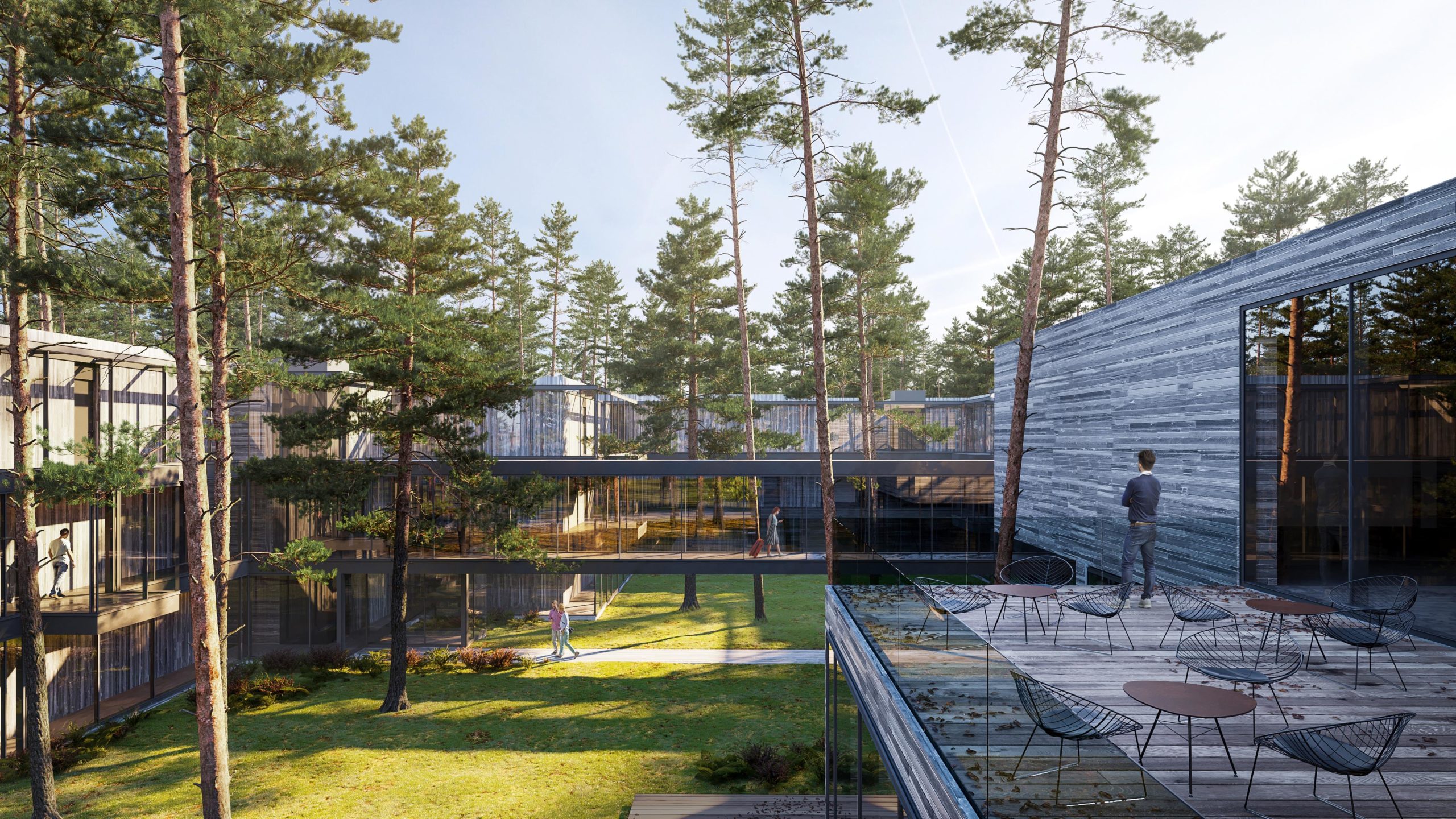
The architectural solution of the complex reflects the main idea of a volume that dissolves in the environment. The staggered, crushed volume structure not only helps to interpose between natural spaces but also creates a humane scale that reflects the values of recreational architecture. Commonly used spaces and corridors are designed with glass facades to open up to the environment and catch the light. The terraced volumes of the living area are separated from one another by blind walls, thus guaranteeing maximum privacy and connection with nature. The connecting reception space is homogenous, where open vertical connections are arranged, clearly forming the attraction to the functions on other levels while at the same time symbolizing the flow of spaces coded in the complex. The architectural ensemble makes it easy to identify the individual functions of the complex while maintaining a small and seamless scale.

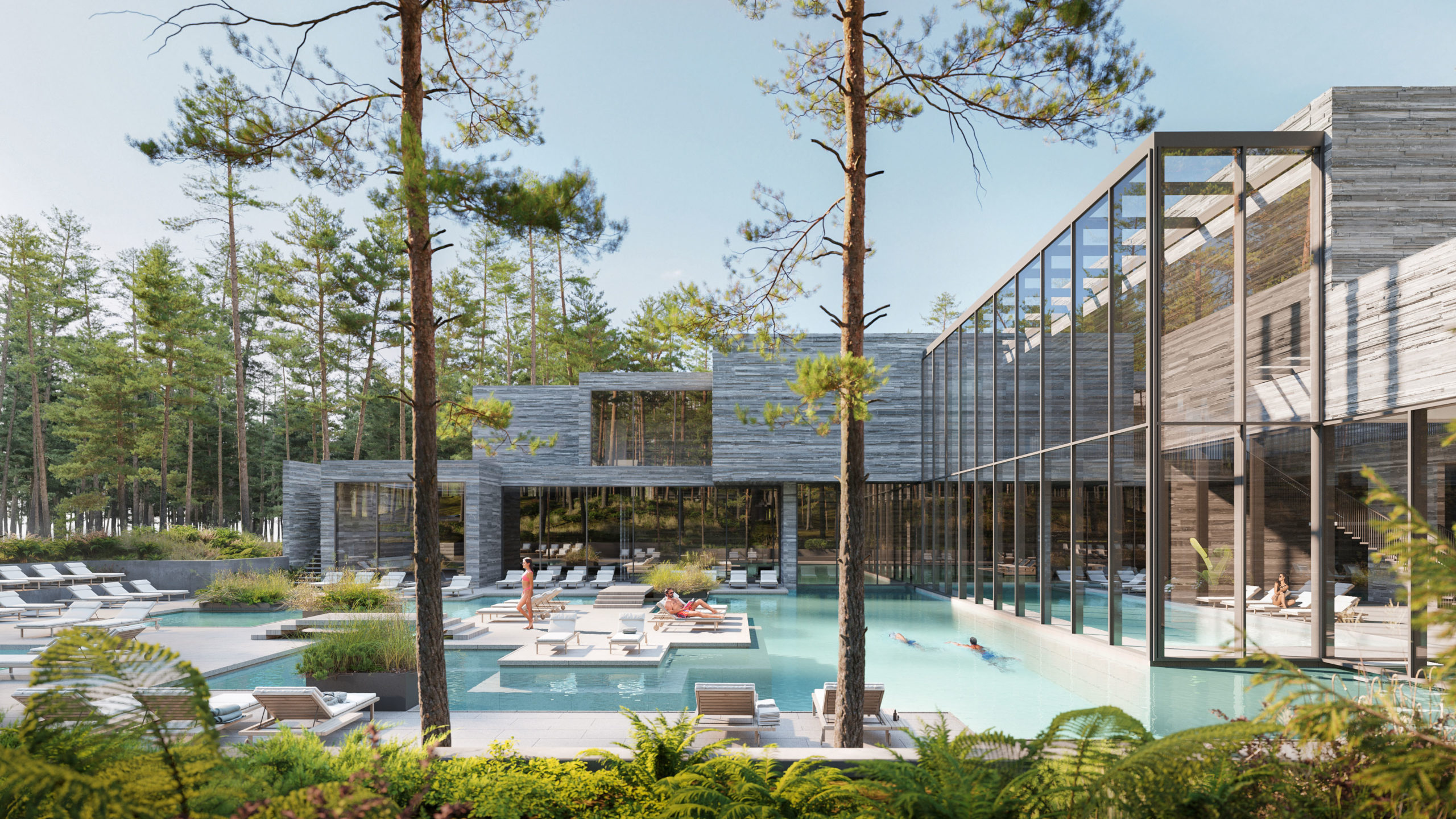
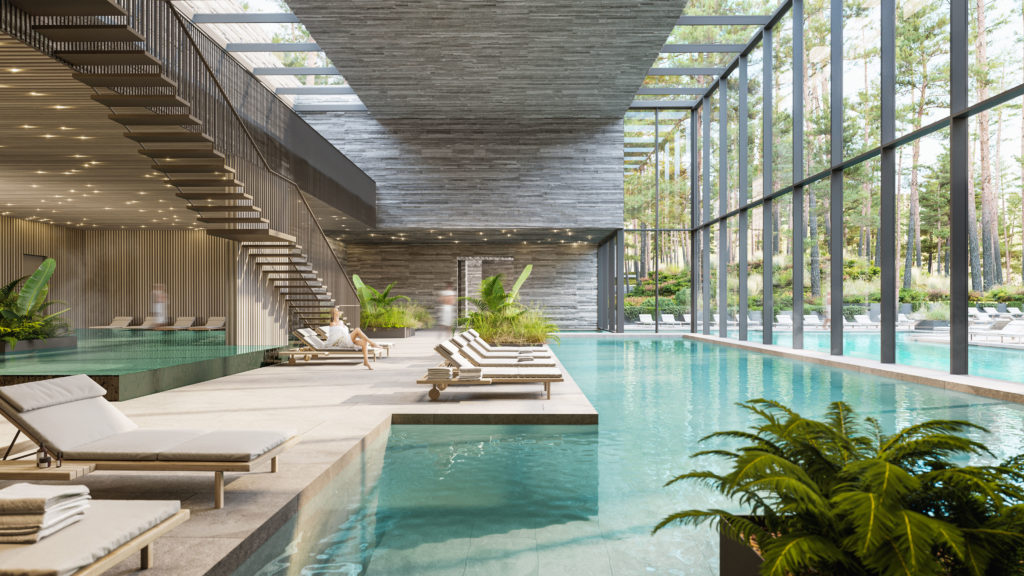
The class of the complex located in an exclusive location is determined by exceptional quality materials and architectural details and their combination. Materials that can age well and are resistant to the coastal climate are offered. The facades are made of stone cut into long strips resembling wooden planks and showcased with a wooden frame forged with aluminum. Wood is used for the decoration of the rooms. In the restaurant and spa areas, a combination of stone and wood elements and fragments of glass roofs are also offered. An anodized zinc sheet is used for the connections of the materials.